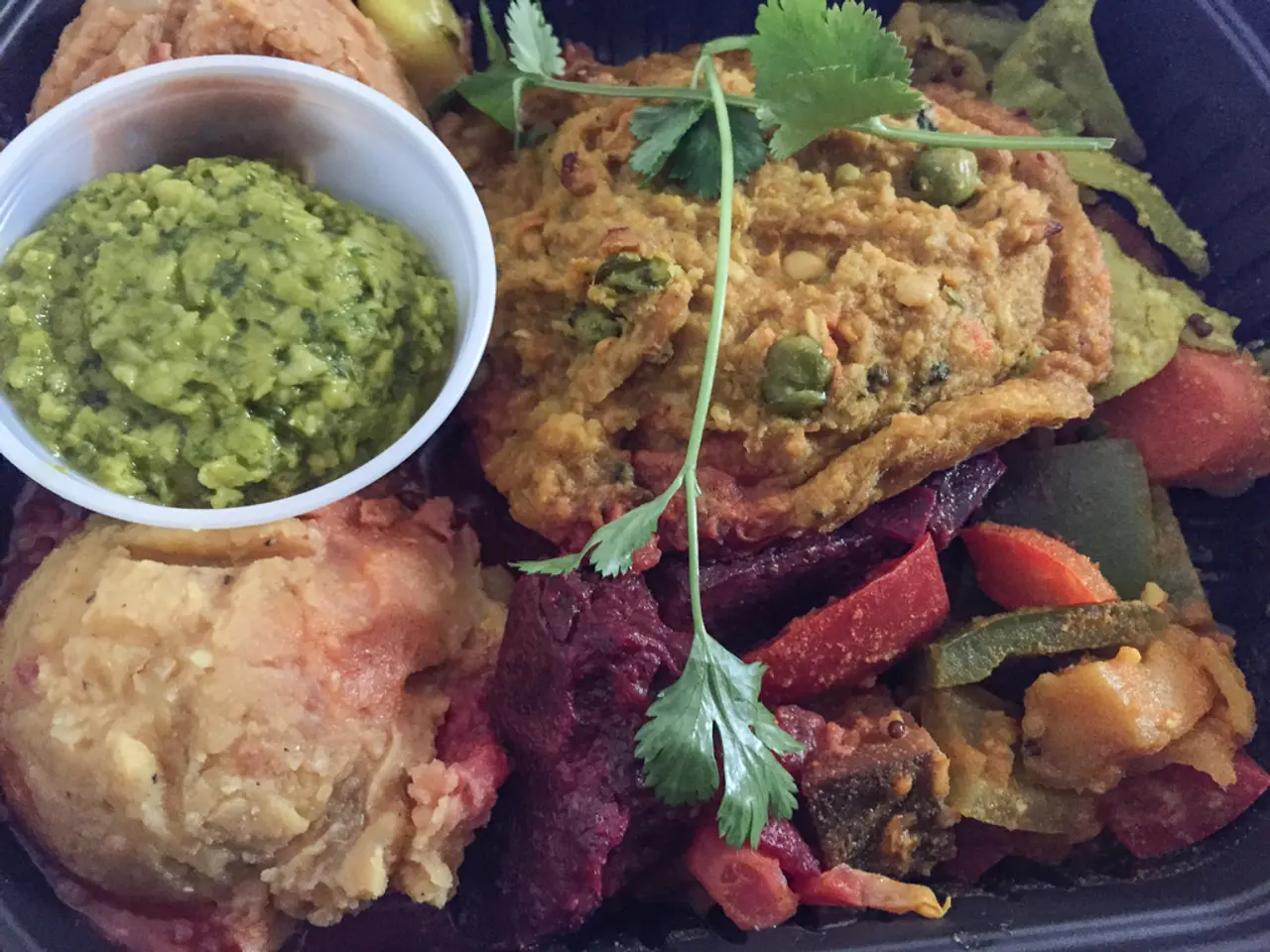Fermented Peperoncini Preserved in Salty Brine Solution
In the heart of late August and early September, a vibrant addition arrives in Community Supported Agriculture (CSA) boxes: pepperoncini peppers. These tangy, pickled peppers make a perfect starting point for anyone embarking on the fascinating journey of pepper fermentation. Here's a step-by-step guide on how to ferment pepperoncini, along with some key tips and a basic recipe.
### Fermenting Pepperoncini: A Step-by-Step Guide
1. **Prepare the Peppers:** - Start by washing the pepperoncini thoroughly. You can leave them whole or slice them, depending on your preference. Removing seeds is optional.
2. **Make a Salt Brine:** - A common ratio for fermentation brine is about 2-3% salt by weight (roughly 1 tablespoon of sea salt per 2 cups of water). Use non-iodized salt (like sea salt or kosher salt) to avoid inhibiting fermentation.
3. **Pack Peppers in a Fermentation Vessel:** - Place the peppers tightly in a clean jar or crock. Optional: Add flavourings such as garlic cloves, peppercorns, or herbs.
4. **Add the Brine:** - Pour the brine over the peppers, ensuring they are completely submerged. You can use a weight or a clean plastic bag filled with brine to keep the peppers under the brine to prevent mold.
5. **Ferment:** - Cover the jar with a loose lid or airlock to allow gases to escape but keep out dust and insects. - Keep the jar at room temperature (around 65-75°F or 18-24°C). - Fermentation typically takes **5 to 14 days** depending on temperature and taste preference. Taste periodically.
6. **Store:** - Once you like the flavor, seal the jar and refrigerate to slow fermentation. - Fermented pepperoncini will keep refrigerated for months.
### Quick Pickling vs. Fermentation
While quick pickling uses vinegar in the brine and does not involve fermentation, fermentation relies solely on saltwater brine and natural bacteria to develop tangy flavors. Fermentation offers the added benefit of probiotic-rich pickles.
### Brine Pickled Pepperoncini Recipe (Inspired by Traditional Methods)
- **Ingredients:** - 2 cups filtered water - 1 to 1.5 tablespoons sea salt (adjust to 2-3% salt concentration) - Pepperoncini peppers (whole or sliced) - Optional: 2 cloves garlic, 1 teaspoon peppercorns, a few slices of onion or herbs
**Steps:**
1. Dissolve salt in water to make brine. 2. Pack peppers and optional flavorings into a clean jar. 3. Pour brine over peppers ensuring full submersion. 4. Cover with a fermentation lid or loosely with a cloth. 5. Let ferment at room temperature for about 1-2 weeks, tasting regularly. 6. When desired flavor is reached, refrigerate.
### Additional Tips for Fermenting Various Peppers
- Jalapeños and Hungarian peppers can be fermented in similar brine solutions and may include sugar and vinegar if quick pickling is desired. - Pepperoncini brine is also popular as a flavoring ingredient in cocktails, indicating a briny, tangy flavor profile. - The key difference between fermented and vinegar pickled peppers is the use of vinegar in pickling and natural microbes in fermentation.
This approach applies broadly to different peppers you want to ferment in brine pickles, adjusting salt levels and fermentation duration to taste and pepper variety. Enjoy your fermenting journey, and let the good bacteria work their magic on your peppers!
- The tangy, pickled pepperoncini peppers, a staple in late August and early September, can be a starting point for anyone interested in the science of fermentation, especially in the realm of health-and-wellness and healthy-cooking.
- Fermenting pepperoncini provides a unique opportunity for fitness enthusiasts and food lovers alike to delve into the art of cooking, as it offers the added benefit of probiotic-rich pickles.
- As you embark on this fermentation journey, it's essential to follow a step-by-step guide, such as the one provided here, to ensure a successful and safe fermentation process.
- The craft of fermentation extends beyond pepperoncini, as it can be applied to various food-and-drink items, enhancing your lifestyle and promoting overall health and wellness.




